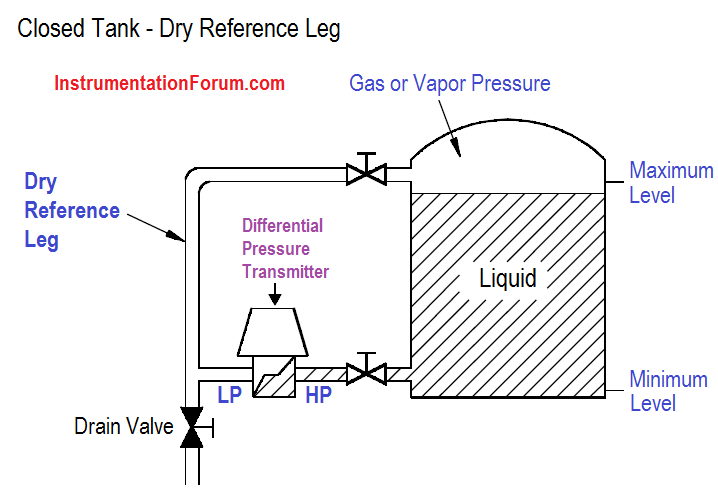Not all tanks or vessels are open to the atmosphere. Many are totally enclosed to prevent vapors or steam from escaping, or to allow pressurizing the contents of the tank. When measuring the level in a tank that is pressurized, or the level that can become pressurized by vapor pressure from the liquid, both the high pressure and low pressure sides of the DP transmitter must be connected.
The high pressure connection is connected to the tank at or below the lower range value to be measured. The low pressure side is connected to a “reference leg” that is connected at or above the upper range value to be measured. The reference leg is pressurized by the gas or vapor pressure, but no liquid is permitted to remain in the reference leg.
The reference leg must be maintained dry so that there is no liquid head pressure on the low pressure side of the transmitter. The high pressure side is exposed to the hydrostatic head of the liquid plus the gas or vapor pressure exerted on the liquid’s surface. The gas or vapor pressure is equally applied to the low and high pressure sides. Therefore, the output of the DP transmitter is directly proportional to the hydrostatic head pressure, that is, the level in the tank.
